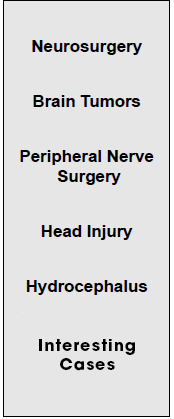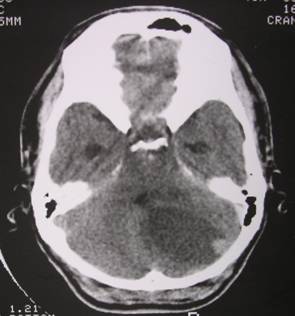
|
|
C A S E O F T H E M O N T H
HEMANGIOBLASTOMA

A 41-year-old man complained of a 6-month history of headache, dizziness, and gait imbalance. He could not walk without assistance because he was unsteady and had poor balance. Two weeks ago, his headaches became more frequent and were accompanied by vomiting, prompting consult.
On examination, the patient was awake and kept complaining of headache. He had no weakness or numbness, but his gait was unsteady and “wide-based.” He also had tremors and poor coordination, especially in his left hand.
CT scan of the brain revealed a mass in the left cerebellum, the part of the brain that controls balance and coordination. The mass appeared to contain mainly fluid, but it had a “mural nodule” at the periphery, a solid nodule located in the wall of the mass. The CT scan also showed mild hydrocephalus or “water in the brain,” which occurred due to blockage of the fluid pathways in the brain by the mass.
The patient underwent surgery for removal of the mass. He improved a great deal after the surgery, with resolution of the headache and vomiting. His gait imbalance and incoordination also improved after a few weeks. Histopathology results showed that the mass was a hemangioblastoma, a benign tumor arising from blood vessels in the brain. In some cases, this is associated with a condition called von Hippel-Lindau syndrome, so further tests would need to be done to see if the patient has this syndrome. |